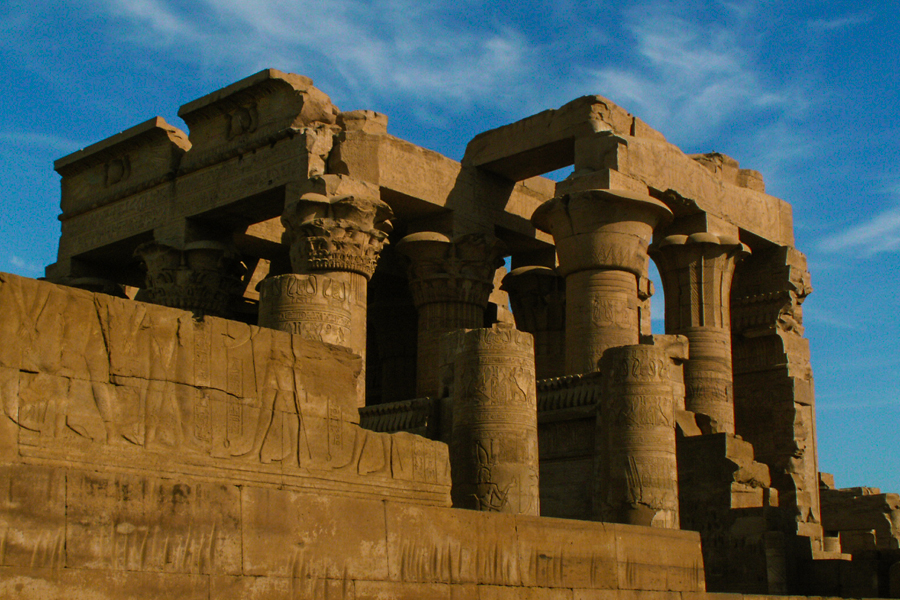The old city of Ombos used to be on a hill about 18 metres higher than the plain around it. In ancient Nubia, this hill was called Kom Ombo, which means “Ombus Hill.” When the Nile goes around this hill, it makes it look like a big island. People who used to live on this island and raise and worship crocodiles might have thought it was a paradise.
When Kom Ombo became the city’s capital during the time of the Ptolemies, it was the first time in history that the city’s economy grew (the province). The city was important from a strategic point of view because it controlled the main trade routes that went through the area.
The happiness of the people who lived there was the most important thing when the temple was being built. Both the falcon god Horus, also called Horus the Elder, and the crocodile god Sobek had their first temples here. The temple is not like other places of worship in this way.
Temple design:
The double temple has a standard design, but its shape hides a wall you can’t see. On one side of the building is a shrine to the god Horus, and on the other side is a shrine to the god Sobek. Macrinus, who was the last Roman emperor to mention himself in the temple, says it was built 400 years ago (217 AD).
During the Roman Empire, the House of Birth (Mammezi) and the temple of the goddess Hathor were built around the same time as the main temple. Both of these were built to honour Hathor.
The main entrance
The main door to the temple faces south. The left tower took the most damage, and it is now mostly done. It showed Horus the Elder, his wife Isis, and their son Horus “son of Isis” leading a group. Sobek leads scenes from the Trinity from the right tower.
In this group, Sobek is married to Hathor, and Khonsu is their son. At the bottom of the wall are triplets. It’s great to have a big yard. In the middle is an altar, and on each side are eight columns.
A roof with astronomical symbols and flying eagles separates the main aisles of the Great Hall. There are 10 columns in the Great Hall. Watch how the crowns’ designs change, and teach them how to do their jobs better. Flower petals and palm leaves are often used to decorate them.
The reliefs that Ptolemy VI, Ptolemy IX, and Ptolemy XII put on the walls of the temple are still in good shape. The Romans built the temple, and the outside bas-reliefs are very old. On the other hand, the inside of the temple has more detailed writing from the time of the Ptolemies.
Each shrine has taken a lot of damage. Both the base of Horus and the base of Sobek were made out of granite. A secret road was built through the wall to connect the two Holy Mosques. Behind this secret place, you had to go through a stone cave to get there. From this spot, the priest could lift up a piece of land to get to a tunnel below the ground.
The priest was supposed to be a sign to not just one of the most important gods in two different religions, but to both of them. Inside the temple, there is a hall with reliefs, some of which are missing, that leads to seven rooms in the back. The outside portico, which is also decorated, can be reached from the courtyard. Under the right door are pictures of Sobek, and under the left door are pictures of Horus.


0 Comment